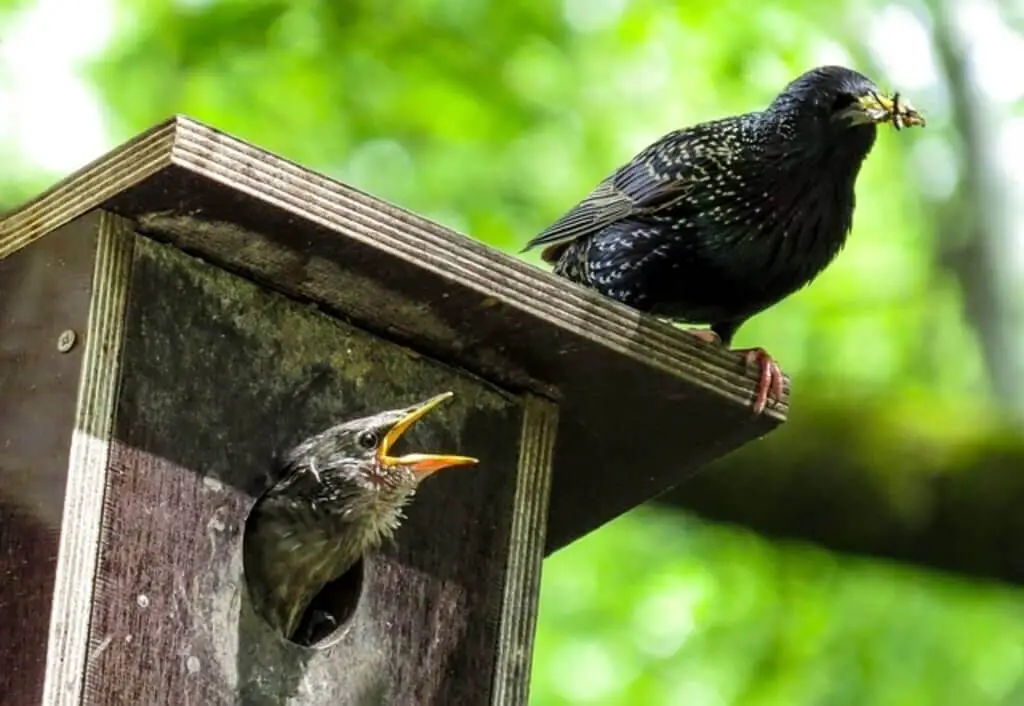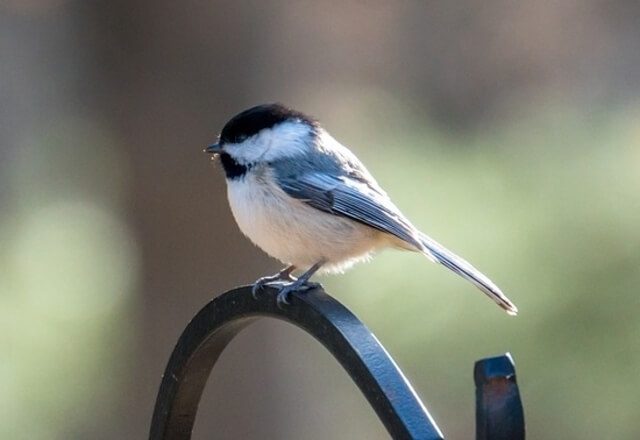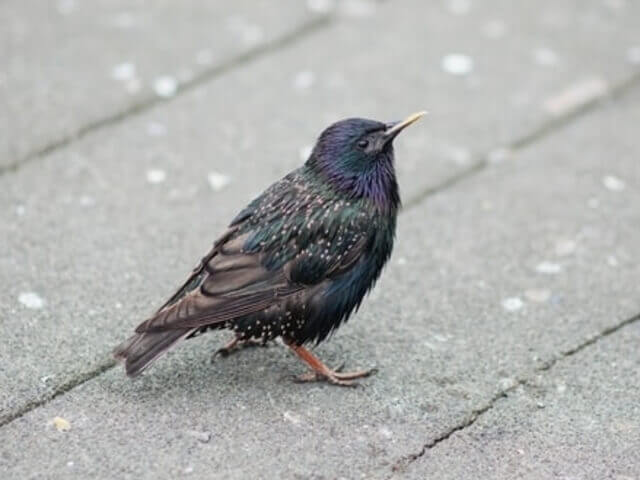Cicadas, abundant during the summer months, are known for their unmistakable buzzing noise. These remarkable insects emerge once every 13 or 17 years, depending on the species, for a short-lived mating season, after which they quickly perish.
Birds are particularly fond of cicadas, as they provide a protein and amino acid-rich feast. Many bird species even migrate to areas teeming with cicadas during breeding season to indulge in this bountiful diet. Join us as we delve into the intriguing world of 19 birds that eat cicadas in this captivating article.
Table of Contents
- 1 Birds That Eat Cicadas
- 1.1 Chickadees
- 1.2 American Goldfinch
- 1.3 Bluebirds
- 1.4 Northern Cardinal
- 1.5 Woodpeckers
- 1.6 Wrens
- 1.7 American Crow
- 1.8 Blue Jay
- 1.9 Common Grackle
- 1.10 Buntings
- 1.11 Shrikes
- 1.12 House Sparrow
- 1.13 Common Starling
- 1.14 Warblers
- 1.15 Brown-headed Cowbird
- 1.16 Tufted Titmouse
- 1.17 Gray Catbird
- 1.18 Brown Thrasher
- 1.19 American Robin
- 2 About Cicadas
- 3 Why Birds Feed on Ciciadas?
- 4 Conclusion
- 5 Author
Birds That Eat Cicadas
Chickadees
Chickadees have been known to occasionally consume cicadas, and they may chase them up trees. In the warmer months of July and August, these small birds can be seen flying around treetops and branches, occasionally feeding on cicadas. While it’s not unheard of for a chickadee to eat several cicadas in a day, it’s not their primary source of food.
American Goldfinch
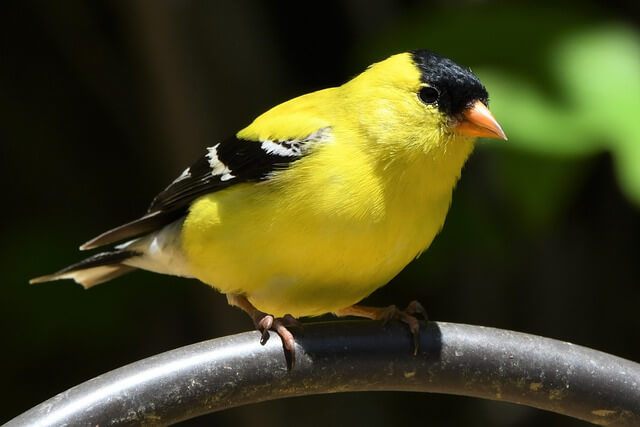
The American Goldfinch is known for its distinctive diet, primarily consisting of seeds, especially sunflower and safflower seeds. They are unique among North American bird species in their preference for seeds. While seeds are their main food source, they may also consume insects like grasshoppers and cicadas as a supplementary part of their diet, particularly during the breeding season when they need additional protein for their young.
Bluebirds

Bluebirds are renowned for their melodious songs, but there’s more to their diet than just music. Surprisingly, bluebirds have a fondness for cicadas, indulging in them as a crucial energy source for the impending winter season. These insects are a prized delicacy for bluebirds due to their high fat and protein content, precisely the nutrients required to gear up for their annual migratory journey southward.
Northern Cardinal
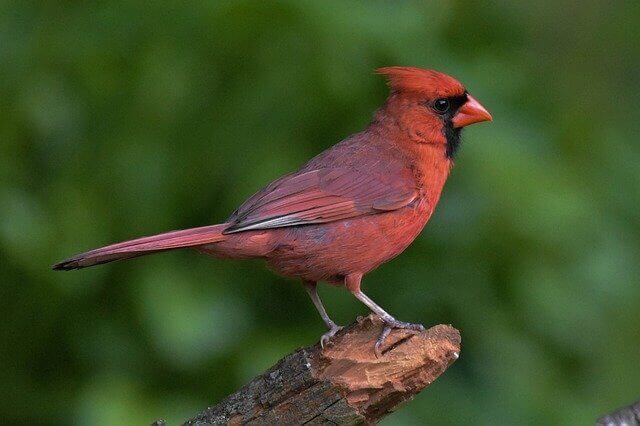
During the summer months, cardinals may appear to sporadically consume cicadas in flight. In truth, these insects serve as a crucial food source for cardinals during this season. Cicadas are rich in fats and proteins, comprising up to 20% of a cardinal’s summer diet. Cardinals adeptly swoop down from above to capture cicadas midair or perch on branches near their congregation, displaying remarkable patience as they wait for an opportune moment to feed.
Woodpeckers
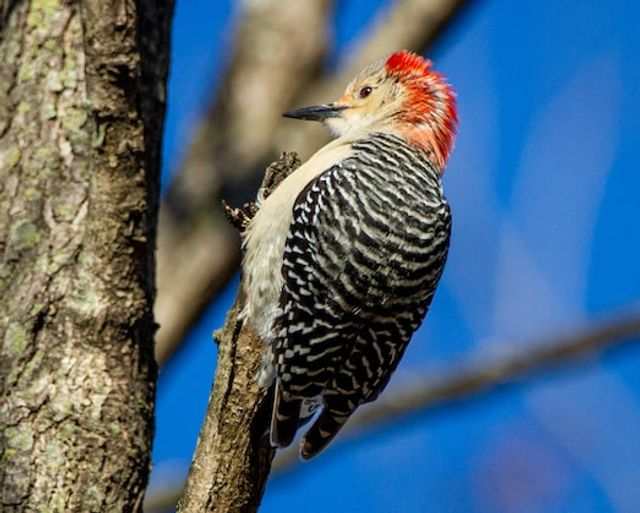
Woodpeckers are perpetual food seekers, their quest leading them through a dynamic menu. During the spring and summer months, they relish insects, sap, and tree bark. Yet, as the fall season arrives, a culinary shift occurs. Woodpeckers turn their attention to the emerging cicadas, fresh from their pupal or nymphal stage. These cicadas become prime targets, offering woodpeckers a rich source of protein. The reason lies in the cicadas’ exoskeleton, which boasts a nutritional profile surpassing that of other insects, making it a seasonal delicacy for these avian foragers.
Wrens
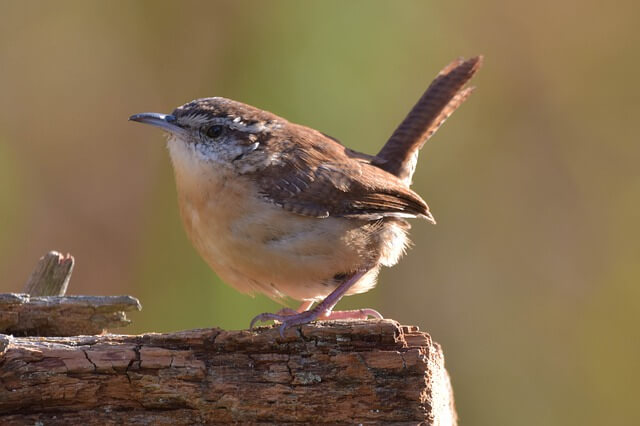
The Common Wren, a petite North American songbird, has a particular preference for cicadas. These insects thrive in the summer months, making them an enticing food source for wrens. To take advantage of this seasonal abundance, wrens often choose nesting sites near cicada-rich areas, ensuring ready access to sustenance. Cicadas play a substantial role in their diet, making them a favored meal for these wrens.
American Crow
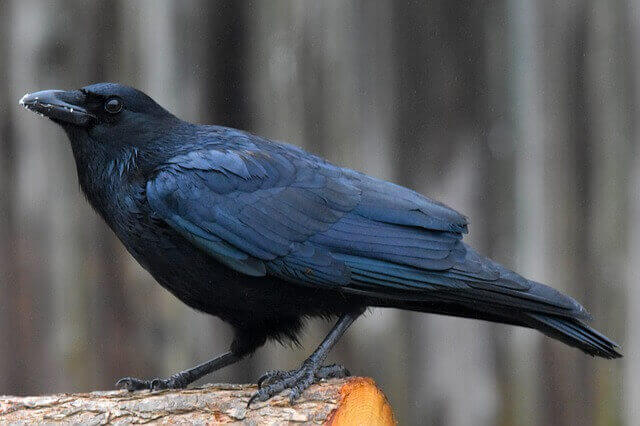
Crows, often underestimated, play a vital role in ecosystems by preying on cicadas. Surprisingly, many are unaware of this fact. When crows encounter cicadas, they exhibit remarkable precision. They selectively consume the tender portions, discarding the resilient shells and wings. With expert finesse, the crow delves into the cicada’s head, savoring its inner fluids. This unique hunting and feeding behavior underscores the crow’s significance in ecological balance, particularly when it comes to population control within their habitats.
Blue Jay
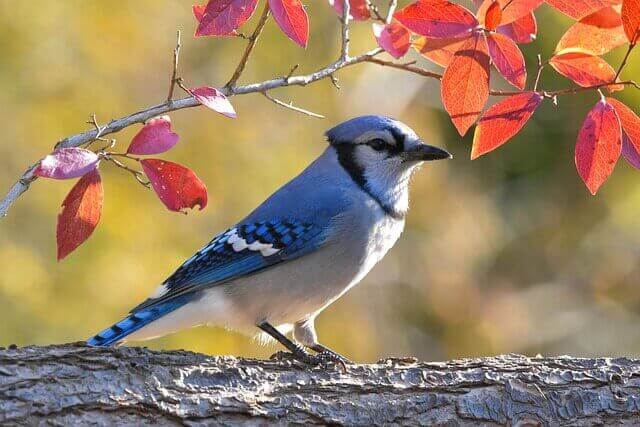
Blue Jays, among numerous avian species, have a penchant for cicadas as part of their dietary choices. To serve as a delectable meal, cicadas must be both lively and freshly caught. While a cicada may undoubtedly tantalize a Blue Jay’s palate, they seldom embark on deliberate cicada hunts. The reason lies in the abundance of more accessible food sources. These small insects conveniently wing their way into the trees inhabited by Blue Jays, presenting effortless and opportune feasting opportunities for these clever birds.
Common Grackle
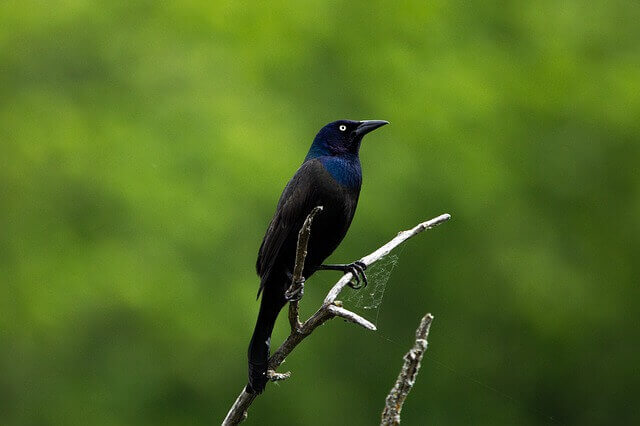
Each autumn, grackles stage a remarkable spectacle as they converge on regions abundant in cicadas. These avian marvels embark on weeks-long feasts, their agile maneuvers allowing them to snatch cicadas mid-air. This fascinating phenomenon stems from the grackles’ instinctual knowledge that cicadas provide a vital source of high-fat, protein-rich sustenance. This feast serves as a strategic preparation, enabling these birds to endure the rigors of harsh winter months with limited access to food resources.
Buntings
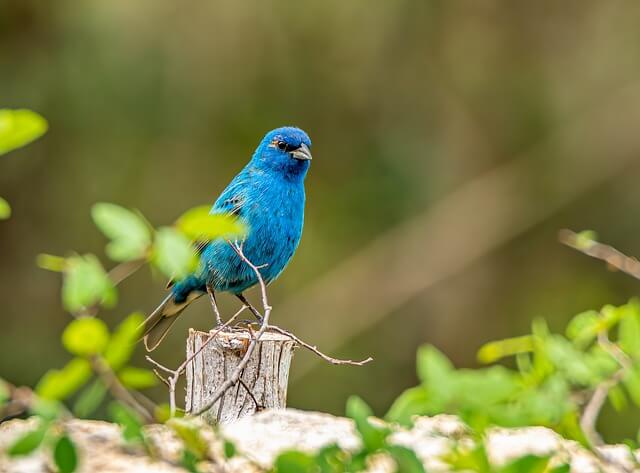
Buntings, a prevalent avian species in the United States, exhibit intriguing feeding behaviors. Among them, the Varied Bunting, Blue Bunting, and Painted Bunting display a penchant for insects, with cicadas ranking among their preferred delicacies. These vibrant birds often locate these insects on trees and employ their specialized beaks to expertly dismember them. While they possess adaptable diets, including various food sources, buntings may resort to consuming worms or spiders when alternative sustenance becomes scarce in their environment.
Shrikes
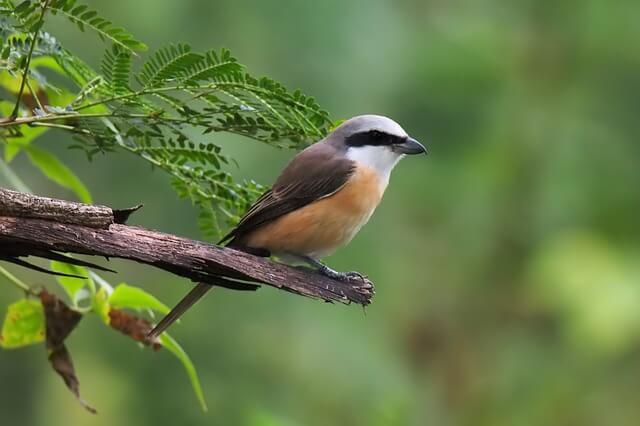
Cicadas rank high on the menu for shrikes, particularly the common shrike, Northern shrike, and loggerhead shrike. These avian predators employ their uniquely designed hooked beaks, enabling them to deftly seize cicadas by expertly jabbing into crevices and tree bark. They exhibit remarkable patience, waiting until their prey loosens its grip before indulging in a full cicada feast. Remarkably, shrikes have the capacity to consume an impressive tally of up to 10 or more cicadas daily, a testament to their voracious appetite and cunning hunting skills.
House Sparrow
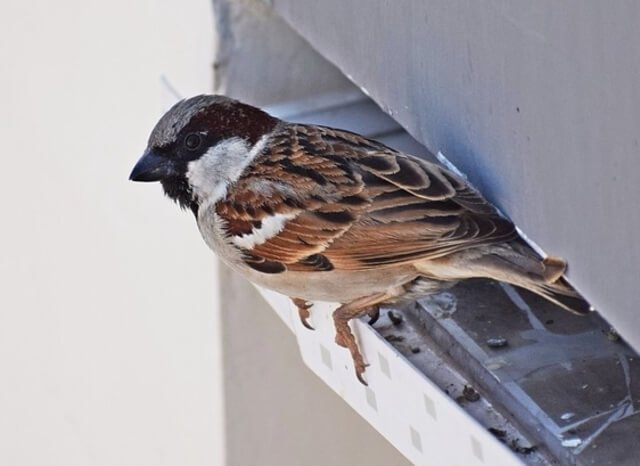
House Sparrows, typically known for their diverse diet of seeds, nuts, berries, grains, and vegetation, exhibit interesting adaptability. During the summer, when cicadas become abundant, these birds seize the opportunity to diversify their diet. Contrary to their usual habits, House Sparrows do consume cicadas, showcasing their opportunistic nature. This unique dietary shift highlights the resourcefulness of these avian creatures in utilizing seasonal food sources.
Common Starling
Common Starlings, versatile in their dietary choices, encompass a wide array of foods. Their menu spans from plant-based offerings, like seeds and fruits, to an omnivorous palate that embraces insects and small animals, such as amphibians and mammals. An intriguing twist occurs in late summer, when cicadas embark on their breeding cycle. Starlings seize the opportunity, nesting in trees housing these insects, savoring them throughout their brief two-week existence before winter’s arrival.
Warblers
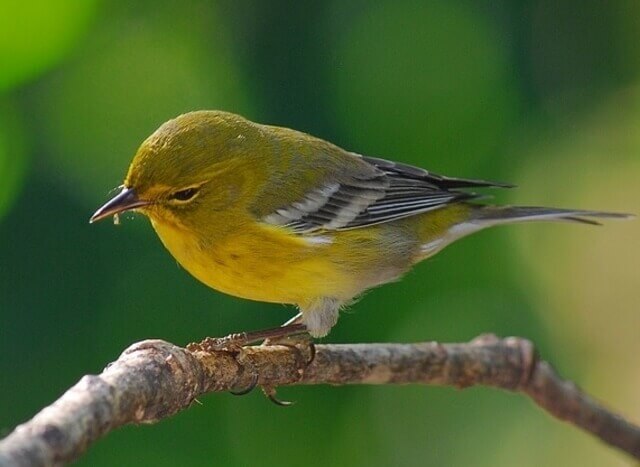
Warblers play a crucial role in their annual life cycle by consuming cicadas in significant quantities. During the summer months, it’s a familiar sight to observe these vibrant birds in your backyard, actively foraging for small insects like aphids and spiders. However, what may surprise you is that warblers are voracious predators of another kind—cicadas. Their populations tend to thrive when an abundance of these buzzing insects is accessible, making cicadas a substantial part of their diet during certain seasons.
Brown-headed Cowbird
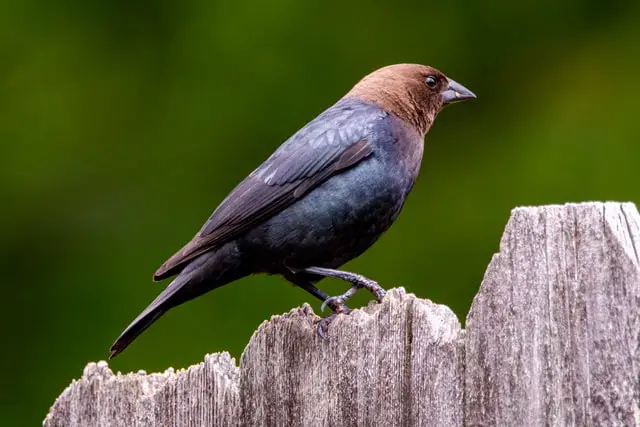
In the summertime, brown-headed cowbirds thrive on a diet primarily composed of cicadas. The heat makes these insects an easily accessible and abundant food source for the birds. Their insatiable appetite for cicadas leads to a noticeable increase in the cowbird population each year, especially during the emergence of new cicada broods in May and June. Additionally, cicadas serve as a vital food source for brown-headed cowbirds during their annual breeding season, which extends from June to September.
Tufted Titmouse
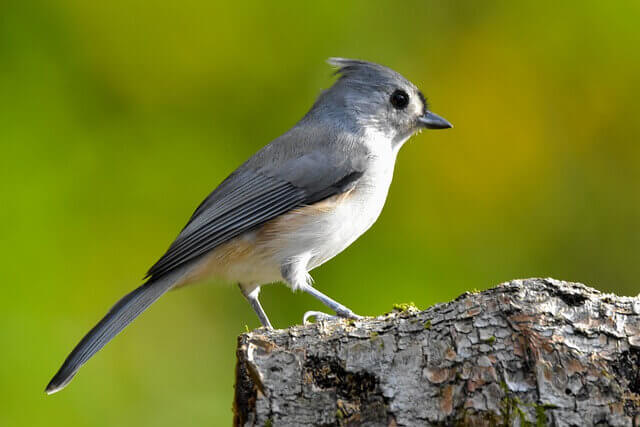
In the eastern United States, the Tufted Titmouse stands out as a consummate insect hunter, devouring an impressive tally of up to 30 cicadas in a single day. This remarkable feat is a testament to their opportunistic feeding behavior and their ability to adapt to the changing availability of food throughout the year. These charming birds, characterized by their tufted crests and striking plumage, can be spotted across an extensive range, spanning from the northern reaches of Canada down to the expansive landscapes of Texas and even venturing into the northern territories of Mexico.
Related Post: How to Attract Tufted Titmouse to my Yard
Gray Catbird

The Gray Catbird, a medium-sized North American songbird, boasts an intriguing blend of habits and habitats. While they commonly inhabit deciduous forests, their adaptability extends to towns and gardens, where they gracefully coexist with human environments. Renowned for their insectivorous diet, Gray Catbirds embark on hunting excursions during the twilight hours, meticulously stalking insects like cicadas. With remarkable precision, they select a low perch, biding their time until they spot their prey. When the moment is right, they take flight, their tails trailing gracefully downward as they deftly snatch their quarry midair.
Brown Thrasher
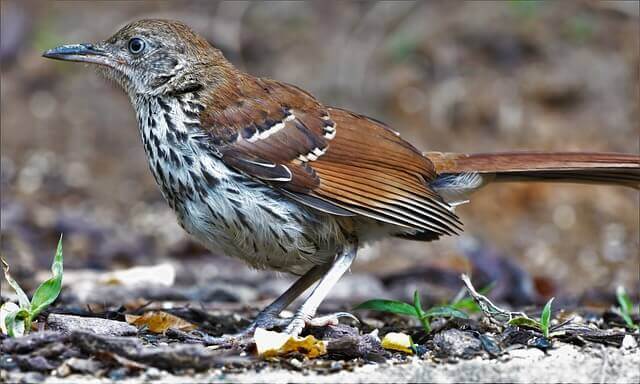
The Brown Thrasher, a small songbird native to the Eastern United States, eagerly awaits the emergence of cicadas this summer. As these fascinating insects shed their nymph stage and transform into adults, the Brown Thrasher indulges in a feast. With a diet primarily focused on insects, the Brown Thrasher particularly favors the periodical cicada, prioritizing it over other insects. It’s not surprising that Brown Thrashers have a fondness for these creatures, as cicadas are exceptionally nutritious, boasting an unusually high-protein content for an insect.
American Robin
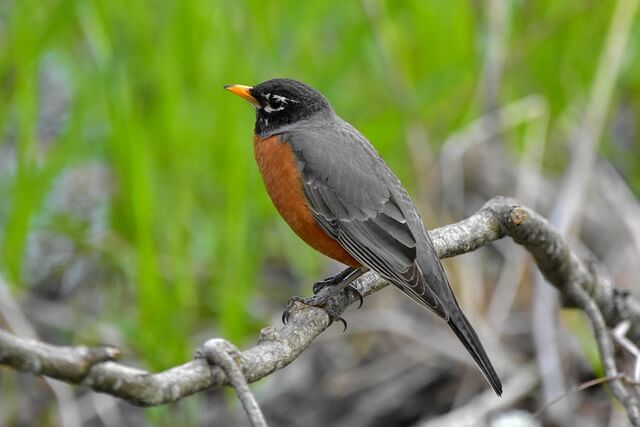
Robins, known for their plump size and beautiful song, have a diverse diet that includes both insects and fruit. These avian creatures hold a special place as iconic symbols of the United States. As late summer approaches, a fascinating phenomenon occurs when cicadas emerge from their underground dwellings to molt. During this short period, before they mate and eventually perish, cicadas take to the skies. It is during this time that robins seize the opportunity to feast on these winged insects, as they become one of the main sources of sustenance for the robins during the late summer months.
About Cicadas
Cicadas, often referred to as “nature’s musicians,” are a fascinating group of insects belonging to the order Hemiptera. These unique insects are renowned for their distinctive, buzzing calls, which are synonymous with warm summer days in many regions of the world. However, cicadas are not just known for their sound; they also play a crucial role in various ecosystems and are a favored food source for numerous bird species.
Life Cycle: Cicadas have a complex life cycle that typically spans several years. They exist in two main phases: nymphs and adults. Nymphs spend the majority of their lives underground, feeding on the sap from tree roots. After a prolonged period, which can range from a few years to more than a decade depending on the species, nymphs emerge from the soil and molt into winged adults. This emergence is often synchronized and can lead to swarms of adult cicadas, known as “broods.”
Physical Characteristics: Adult cicadas are characterized by their large, transparent wings, prominent eyes, and distinctively shaped bodies. They come in a variety of species, each with its own unique coloration and markings, ranging from green to brown and black.
Soundscape: Male cicadas produce their characteristic buzzing calls by vibrating specialized structures called tymbals located on their abdomen. These calls serve as a means of attracting females for mating. The intensity and rhythm of the calls can vary among different cicada species, contributing to the rich tapestry of sounds in the summer environment.
Ecological Significance: Cicadas are essential to their ecosystems. They serve as a food source for a wide range of animals, including birds, mammals, and insects. Birds, in particular, have adapted to exploit the abundance of cicadas during their emergences, making them a crucial part of the avian diet in many regions.
Cicada Emergences: Cicadas are known for their periodic mass emergences, during which large numbers of nymphs mature into adults simultaneously. These emergences are cyclical and vary by species, with some appearing annually and others emerging in distinct broods over longer intervals.
Why Birds Feed on Ciciadas?
Birds and cicadas share a fascinating relationship in the world of avian ecology. The fact that many bird species actively seek out and consume cicadas is a testament to the intricacies of nature and the survival strategies adopted by these winged creatures. In this section, I will delve into the reasons why birds feed on cicadas, shedding light on the various ecological, biological, and behavioral factors that drive this unique dietary choice.
Abundance and Seasonality: One of the primary reasons why birds feed on cicadas is the sheer abundance of these insects during specific seasons. Cicadas are known for their periodic emergences, which can result in massive population explosions. This sudden abundance of prey offers birds a rich and easily accessible food source, helping them meet their nutritional needs during these periods.
High Nutritional Value: Cicadas are a nutritional powerhouse for birds. They are rich in protein, a vital component of avian diets, especially during breeding and raising young chicks. Additionally, cicadas are packed with essential vitamins and minerals, making them an excellent source of energy for birds.
Synchronous Emergences: Cicadas’ periodic emergences are often synchronized, meaning they appear in large numbers simultaneously. This synchronization creates a concentrated food source, which is particularly attractive to birds. They can efficiently forage in a single area, maximizing their energy intake.
Energy Efficiency: Birds, especially migratory species, prioritize energy conservation. Cicadas offer a high-energy food source, reducing the need for birds to spend excessive time and energy searching for prey. This efficiency is crucial for birds during migration or when raising young.
Predatory Behavior: Many bird species have developed specialized hunting techniques to capture cicadas. These techniques may include aerial acrobatics, hovering, or perching in strategic locations to ambush emerging cicadas. Such behaviors highlight the adaptability and intelligence of birds as predators.
Cicada Lifecycle: Understanding the lifecycle of cicadas is crucial in comprehending why birds feed on them. Cicadas spend the majority of their lives underground as nymphs, emerging as adults only for a brief period. During this time, they are highly vulnerable, making them an easy target for opportunistic bird predators.
Dietary Variation: While some birds may focus primarily on cicadas during their emergence, others incorporate them as a seasonal dietary supplement. This dietary flexibility allows birds to exploit the abundance of cicadas when available while still maintaining a varied diet throughout the year.
Co-evolutionary History: The relationship between birds and cicadas has evolved over millions of years. As cicadas have developed defense mechanisms, such as loud mating calls and cryptic coloration, birds have also adapted to become more efficient cicada hunters, further underscoring the co-evolutionary dynamics at play.
Conclusion
In conclusion, the relationship between birds and cicadas is a captivating example of nature’s intricate balance and the adaptability of avian species. From the abundance and nutritional value of cicadas to the specialized hunting techniques developed by birds, this dynamic showcases the beauty of ecological interactions.
It serves as a reminder that even seemingly common interactions in the natural world reveal the extraordinary intricacies of life on Earth. Studying birds that eat cicadas unveils just one of the many fascinating stories in the world of ornithology, inviting us to appreciate the interconnectedness of all living creatures and the wonders of the natural world.

